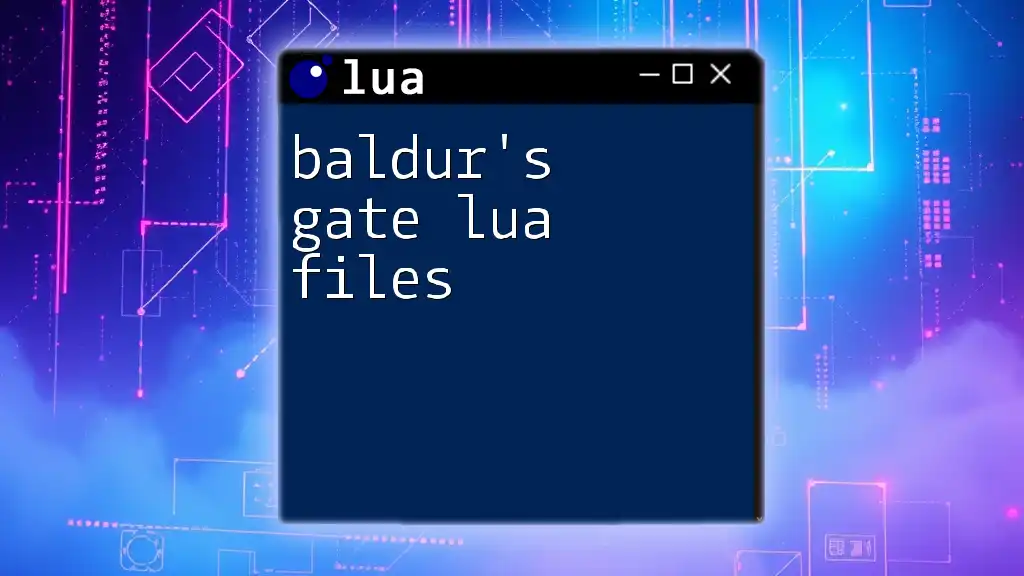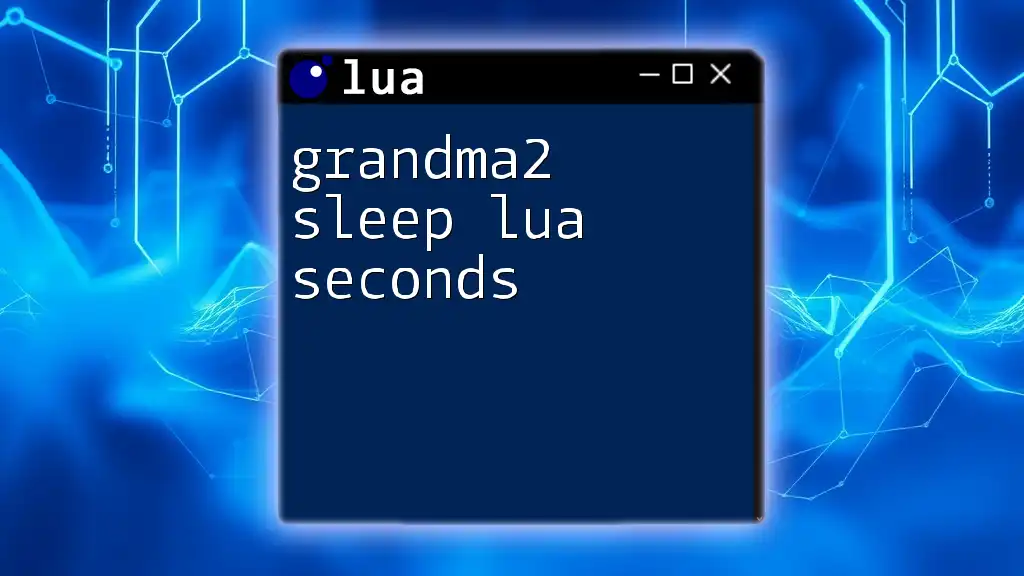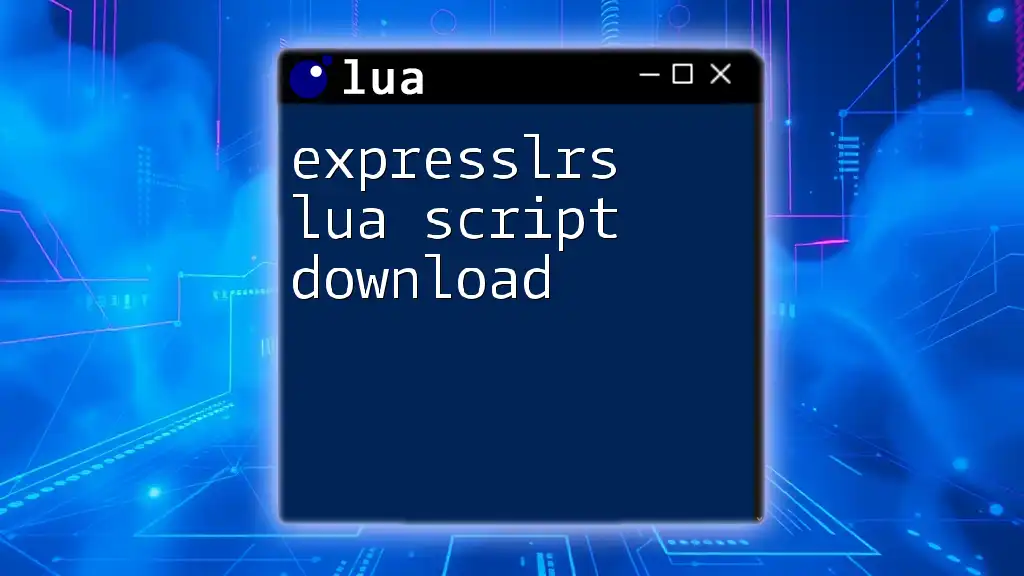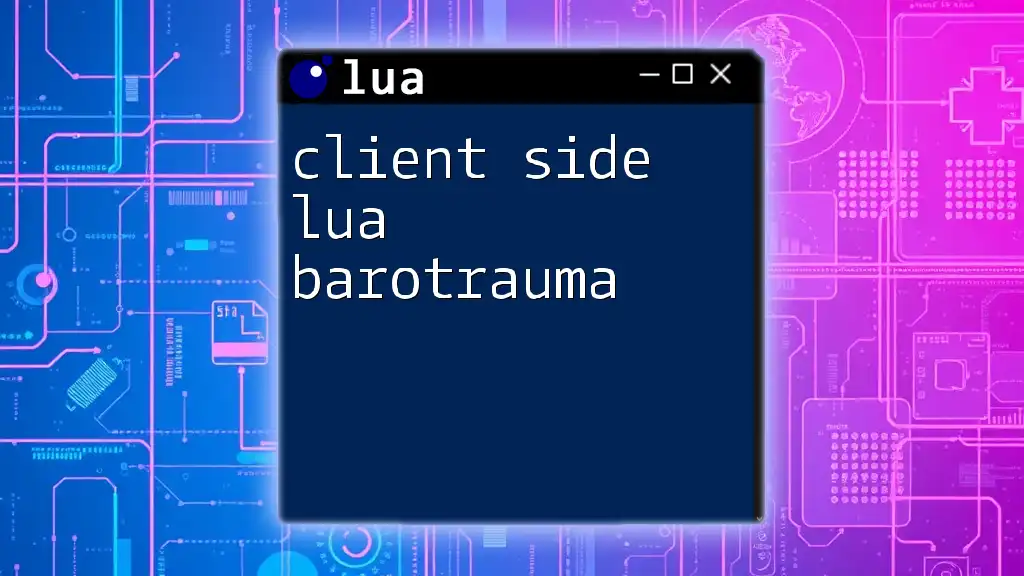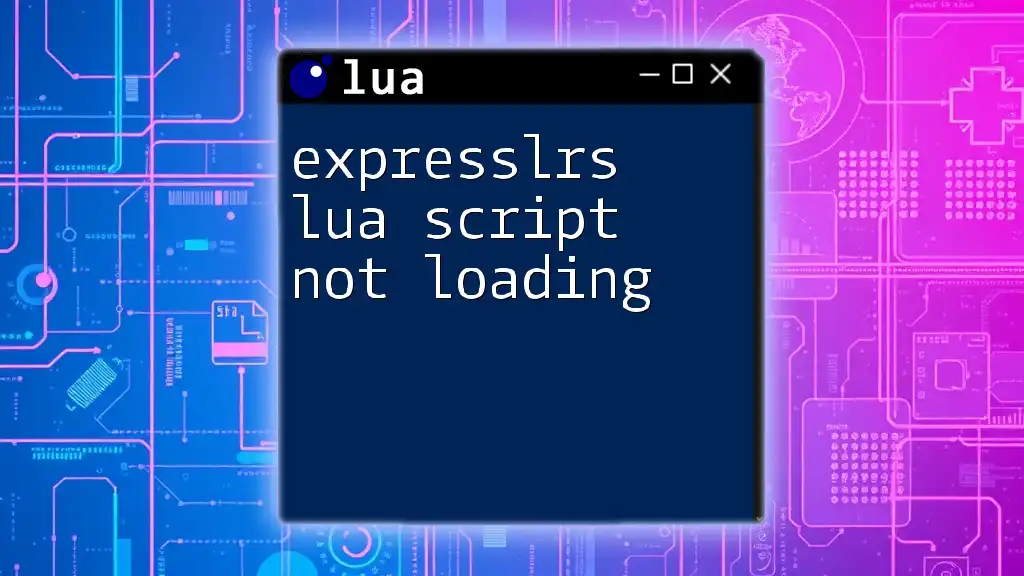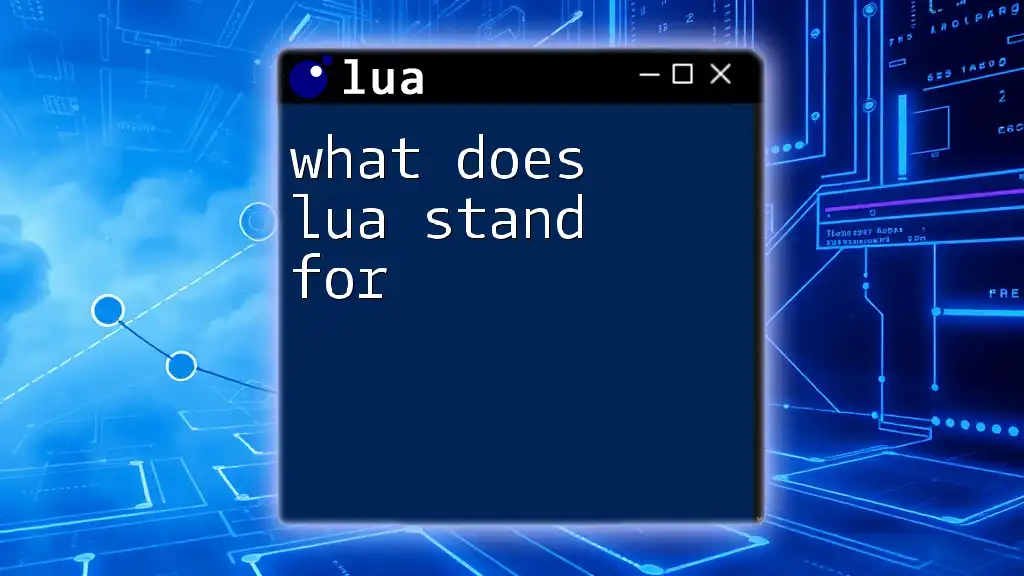"Save state" in Lua TTS (Tabletop Simulator) refers to preserving the current game state, allowing players to restore or load specific configurations later.
Here’s a code snippet demonstrating how to save the state of an object in Lua TTS:
function saveState(object)
local state = object.getDescription()
-- Store the object's state in a custom property or save file
saveDataToFile(state)
end
What is Lua TTS?
Definition of Lua TTS
Lua TTS refers to the integration of Text-To-Speech capabilities within the Lua programming language. Lua is widely utilized for scripting in various applications due to its efficiency and simplicity. By incorporating TTS, developers can enable applications to read text aloud, which is particularly useful in educational tools, games, and assistive technologies.
Benefits of Using Lua TTS
Using Lua TTS offers several advantages, including:
- Simplicity and Ease of Use: Lua's straightforward syntax allows developers to quickly implement TTS functionality, making it accessible even for beginners.
- Integration Capabilities: Lua can easily integrate with various tools and libraries, allowing developers to create more complex applications that leverage TTS.
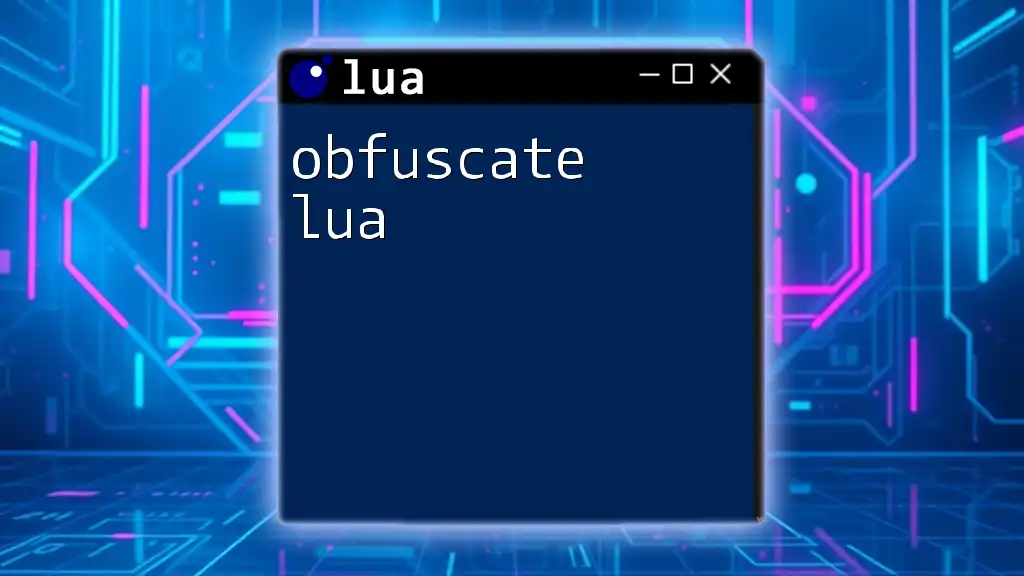
Understanding Save State in Lua
What Does "Save State" Mean?
In the context of Lua, save state refers to capturing the current execution context of a program, enabling developers to halt and resume operations without losing progress. This feature is essential in applications that require user interaction or ongoing processes, such as games or interactive educational software.
Why Use Save State in Lua TTS?
Using save state in Lua TTS can significantly enhance the user experience. For instance, if a user is interacting with a TTS application and needs to pause the settings configuration, saving the current state ensures they can return without any interruptions. This functionality is vital in scenarios such as:
- Long Sessions: In applications where users listen to configurations or read extensive information aloud, save state allows users to resume smoothly.
- Customization: Allowing users to save their preferred settings makes the application more personalized and user-friendly.
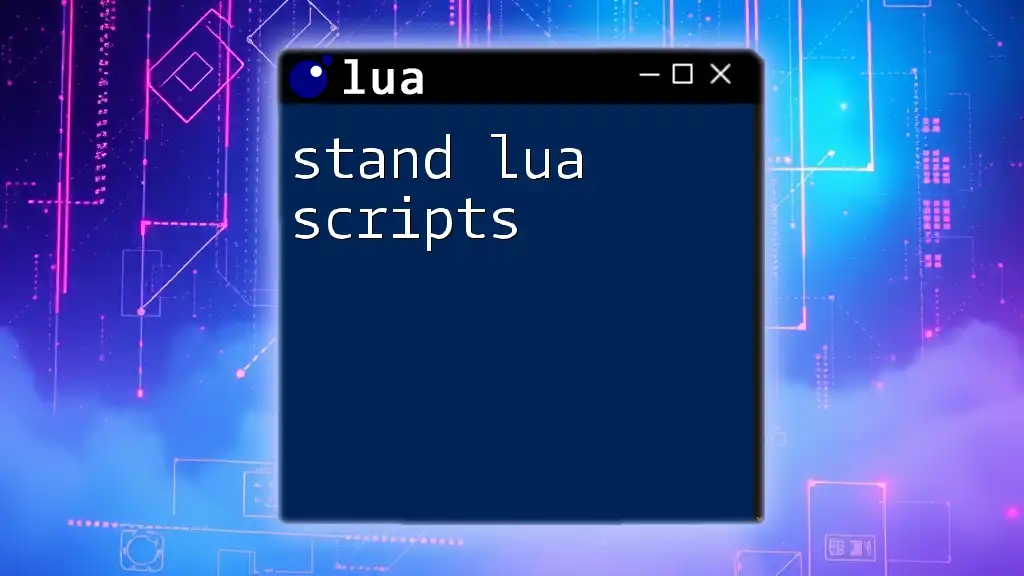
Implementing Save State in Lua TTS
Setting Up Your Environment
Before diving into implementing save state in Lua TTS, ensure that you have the necessary software and tools installed. Recommended Integrated Development Environments (IDEs) for Lua development include:
- ZeroBrane Studio: A powerful and lightweight IDE that provides great support for Lua.
- Visual Studio Code: With the Lua extension, this versatile editor can serve as an efficient environment for Lua development.
Basic Syntax for Save State
To save state in Lua, you'll typically use tables to store relevant data. Here’s a simple example showcasing a basic state-saving mechanism:
-- Function to save state
function saveState(data)
local state = {}
for key, value in pairs(data) do
state[key] = value
end
return state
end
In this function, we create a new table called `state` and iterate over the provided `data` table to copy its contents. This allows you to retrieve the current state of your application easily.
Restoring State
Strategies for State Restoration
You can use Lua's built-in functions like `loadfile` and `dofile` to efficiently restore the saved state. This allows the program to reload variables and settings, returning the application to its previous state.
Example:
-- Function to restore state
function loadState(state)
-- Restoring data
for key, value in pairs(state) do
_G[key] = value -- Restore global variables
end
end
In this example, we take a `state` table and loop through its key-value pairs to restore the previously saved global variables. This function is essential for retrieving user preferences or continuation points.

Advanced Techniques for Save State
Utilizing Serialization for Complex States
Serialization refers to the process of converting a data structure (like tables in Lua) into a format that can be easily saved to storage. By serializing state data, developers can handle more complex states effectively.
Example of Serialization:
local json = require("json")
-- Function to serialize state to JSON
function serializeState(state)
return json.encode(state)
end
In this snippet, we utilize the JSON library to encode the `state` table into a JSON string. This string can be easily written to a file or sent over the network.
Saving State to a File
Writing State to Disk
To persist the saved state beyond the application's runtime, we can write it to a file. Saving the state this way ensures it can be reloaded even after the application is closed.
Example:
function saveToFile(fileName, state)
local file = io.open(fileName, "w")
file:write(serializeState(state))
file:close()
end
This function takes a filename and a `state` table, serializes it, and writes the JSON string to the specified file.
Retrieving State from a File
Reading from Disk
To restore a saved state from a file, you can read the data back into your Lua application. This process allows you to bring back the saved configurations effortlessly.
Example:
function loadFromFile(fileName)
local file = io.open(fileName, "r")
local content = file:read("*a")
file:close()
return json.decode(content) -- Decode JSON back to Lua table
end
Here, we open a file for reading, retrieve its content, and decode the JSON back into a Lua table, allowing you to restore application state seamlessly.
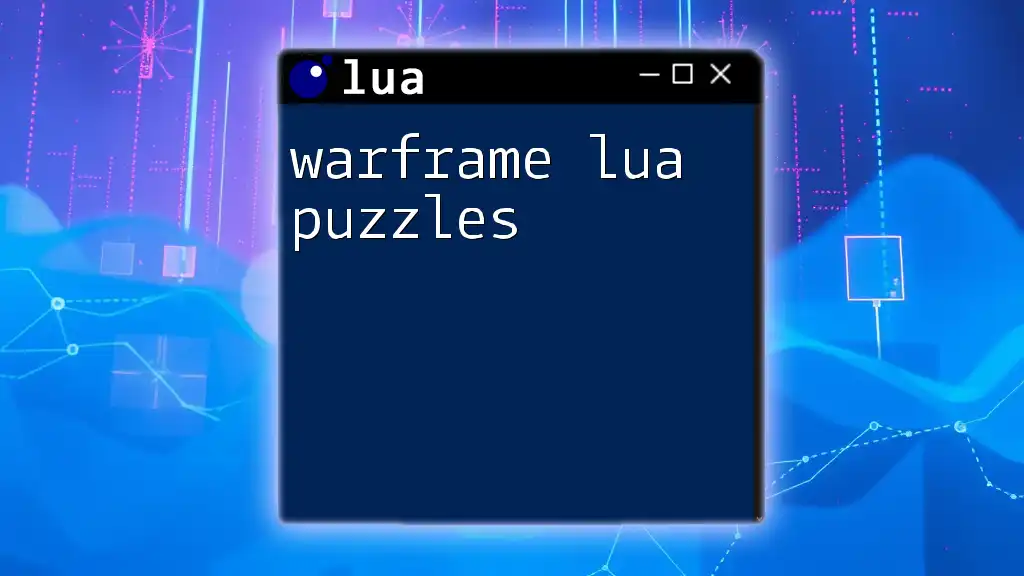
Real-World Applications of Save State in Lua TTS
Enhancing User Experience
The ability to save state enhances user interaction by allowing continuous and non-disruptive application experiences. For example:
- Interactive Learning Tools: In educational applications, users can pause their learning sessions and return later to continue where they left off.
- Game Development: TTS in games can resume dialogues without requiring users to repeat previous interactions.
Case Studies
Case Study 1: Educational Software
Consider how a language-learning application implemented save state for TTS, allowing users to save their progress on vocabulary audio sessions. Feedback indicated that users appreciated being able to pause lessons and return without retracing their steps, leading to better retention of new words.
Case Study 2: Games Development
In interactive games, TTS can narrate character dialogues. By implementing save state functionality, players can pause and resume dialogues without losing context, enhancing gameplay experience.

Common Issues and Troubleshooting
Common Pitfalls When Implementing Save State
While implementing save state functionality, developers may encounter several issues:
- Data Loss: If not handled properly, saving state can lead to incomplete or corrupted data.
- Performance Issues: Inefficient loading and saving methods may slow down the application.
Troubleshooting Tips
To address issues with save state in Lua TTS, here are some tips:
- Debugging Techniques: Utilize logging to monitor state changes and pinpoint issues. For example, print logs before and after saving and loading states to track progress effectively.
- Streamlining Data Handling: Focus on optimizing the data you save and load to streamline performance. Only save essential items to minimize overhead.

Conclusion
Incorporating save state functionality in Lua TTS can elevate user experiences, making applications more robust and user-friendly. By following the steps outlined in this guide, developers can effectively implement state-saving mechanisms, allowing users to enjoy continuous interactions without disruption. Explore the provided examples and take the opportunity to customize your own Lua TTS applications to meet user needs and preferences.
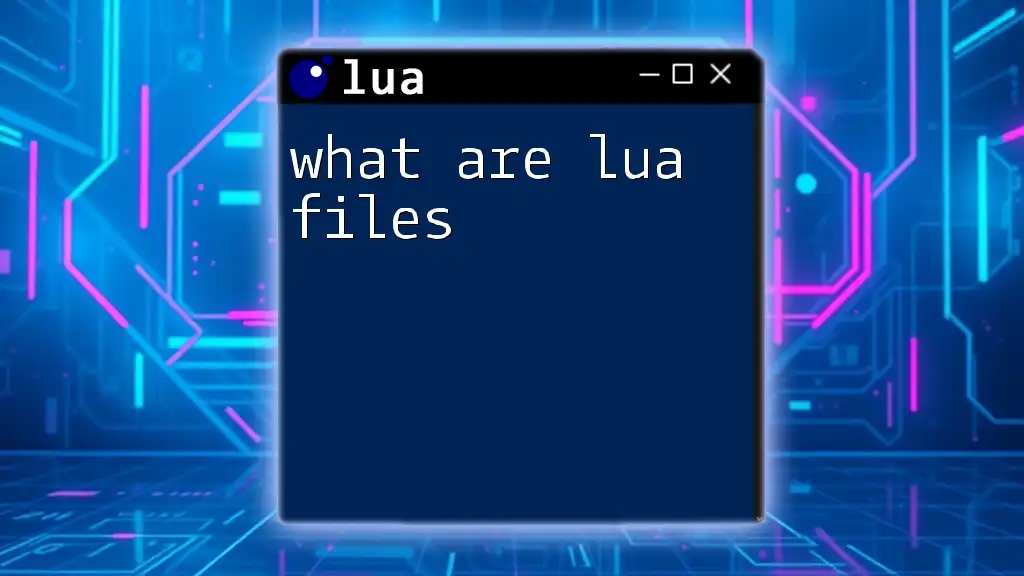
Additional Resources
For further exploration of Lua TTS and advanced save state techniques, consider visiting the following resources:
- Official Lua documentation
- Comprehensive guides on TTS technologies
- Community forums and support channels for Lua development








